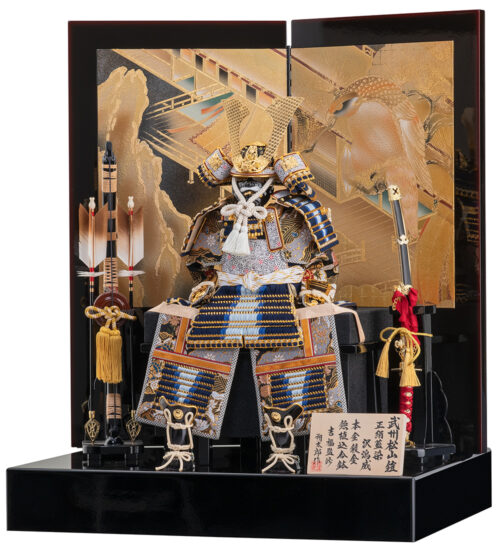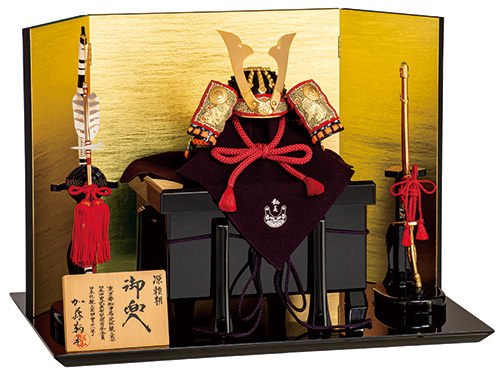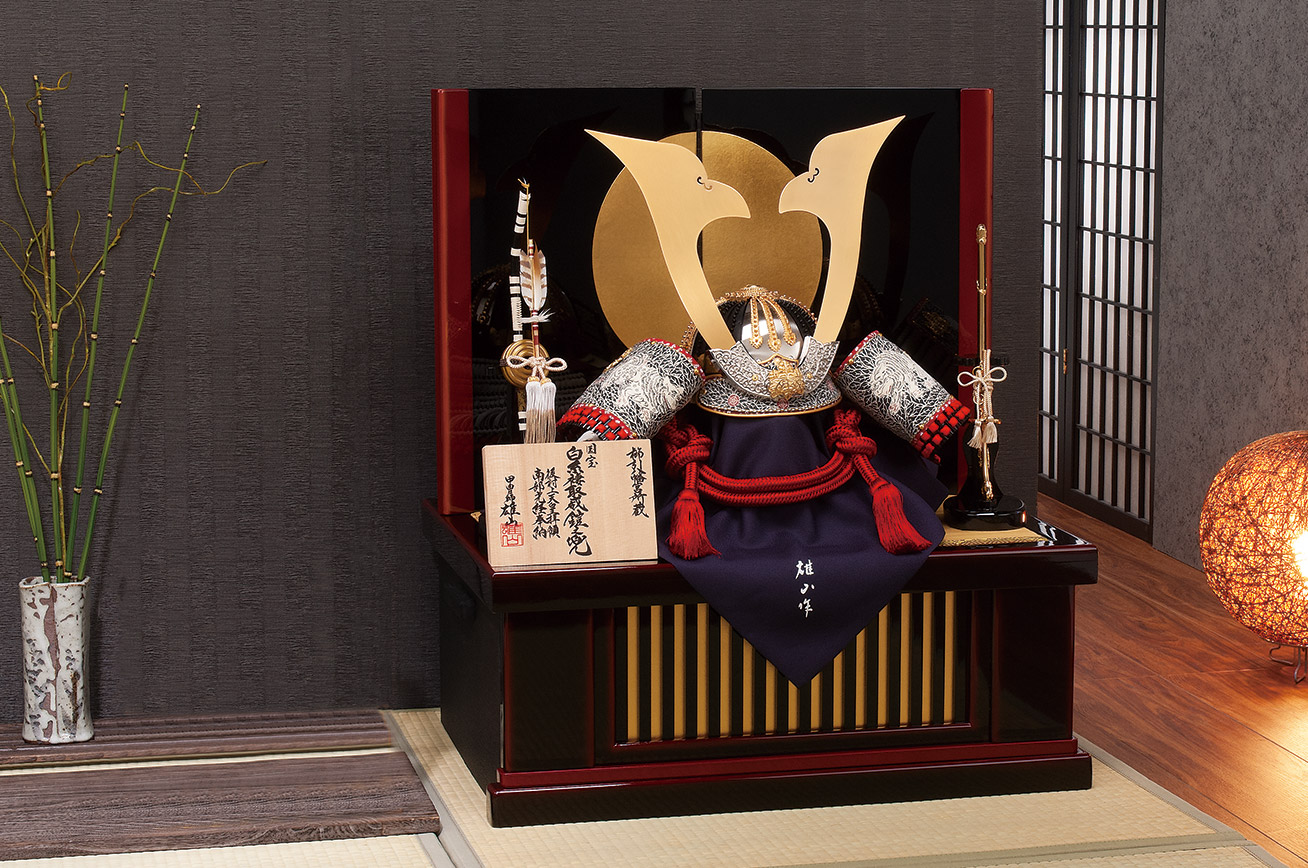What is a Gogatsu-ningyo, and what is an Ornamental Helmet?
For a happy and healthy boy
 In modern Japan, “Kodomo no Hi”, or Children’s Day, is celebrated on May 5th of every year. This day, however, originally fell on on Tango no Sekku (Boys’ Day celebration), which was one of the five annual ceremonies (Gosekku) traditionally held in Japanese imperial court. Then, in the start of the Edo period, with the center of power shifting from the aristocracy to the samurai class, Tango no Sekku (also known as “Ayame no Hi”, or “Iris festival”) became more and more popular with samurai families as the rustling sound of Iris reminded many of the sound made when honoring warriors. This festival became an important day to pray for the safe and healthy growth of a boy born as the heir to the family, as well as pray for the general wealth and prosperity for the family. As Hinamatsuri (held on March 3rd of every year) became popular for girls, Tango no Sekku also became a festival for boys.
In modern Japan, “Kodomo no Hi”, or Children’s Day, is celebrated on May 5th of every year. This day, however, originally fell on on Tango no Sekku (Boys’ Day celebration), which was one of the five annual ceremonies (Gosekku) traditionally held in Japanese imperial court. Then, in the start of the Edo period, with the center of power shifting from the aristocracy to the samurai class, Tango no Sekku (also known as “Ayame no Hi”, or “Iris festival”) became more and more popular with samurai families as the rustling sound of Iris reminded many of the sound made when honoring warriors. This festival became an important day to pray for the safe and healthy growth of a boy born as the heir to the family, as well as pray for the general wealth and prosperity for the family. As Hinamatsuri (held on March 3rd of every year) became popular for girls, Tango no Sekku also became a festival for boys.
The custom of displaying armor and helmets originated from samurai families, and is derived from the custom of offering armor and helmets when visiting shrines to pray for safety. Although some may consider armor and helmets to be tools used for war, to warlords, these were crucial tools used for protection, served as a spiritual symbol, and were important treasures.
In modern times, the protective meaning of armor and helmet is further emphasized, and are therefore displayed with the hopes of protecting children from traffic accidents and potential illnesses.
Types of Gogatsu-ningyo
Customers can choose from a wide variety of decorations such as ornamental helmets, armor, dolls of a war general, and samurai dolls.
Kabuto, or ornamental helmets, come with the most variety in terms of prices and sizes, and is quite popular among our customers. Armor decorations take a long time to produce as they require the skills of a master artisan. These ornaments symbolize the spirit of Japan even in the modern times, and are a great gift for anyone all over the world who appreciates samurai culture.
Koinobori are a seasonal decoration which originated in the Edo period among the merchant class. Carps are extremely vigorous fish that can thrive in ponds as well as swamps and clear streams, so much so that there was an ancient Chinese legend which says that when a carp climbed a waterfall called “Ryumon”, it became a dragon and ascended to heaven (this is also the origin of the name “Toryumon”, or “dragon’s gate”). Therefore, these Koinobori carp-windsocks became a decoration to pray for a child’s success in life, so that he or she may weather any challenges that may come his or her way and become an admirable person in the future.
Yoshifuku’s Gogogatsu-ningyo
We would like to present to you a part of the collection of gogatsu-ningyo we have for sale at here at Ningyo no Yoshifuku.


